Revolving doors have been used in commercial buildings for over a century and continue to be popular today. But what is the purpose of revolving doors?
When you walk into a building, the last thing you think about is the door. But believe it or not, a lot of thought goes into choosing the right door for a building.
Doors come in all shapes and sizes, from sliding and swing to automatic and revolving doors. But they all serve the same basic purpose: to provide a barrier between two spaces.
And while revolving doors may be seen as a luxury, they are a functional and cost-effective solution for many businesses.
Revolving doors are vital in commercial buildings for regulating traffic flow and managing climate control. However, they offer many other benefits that can benefit businesses.
Here’s why you should consider installing a revolving door for your commercial building.
The purpose of revolving doors
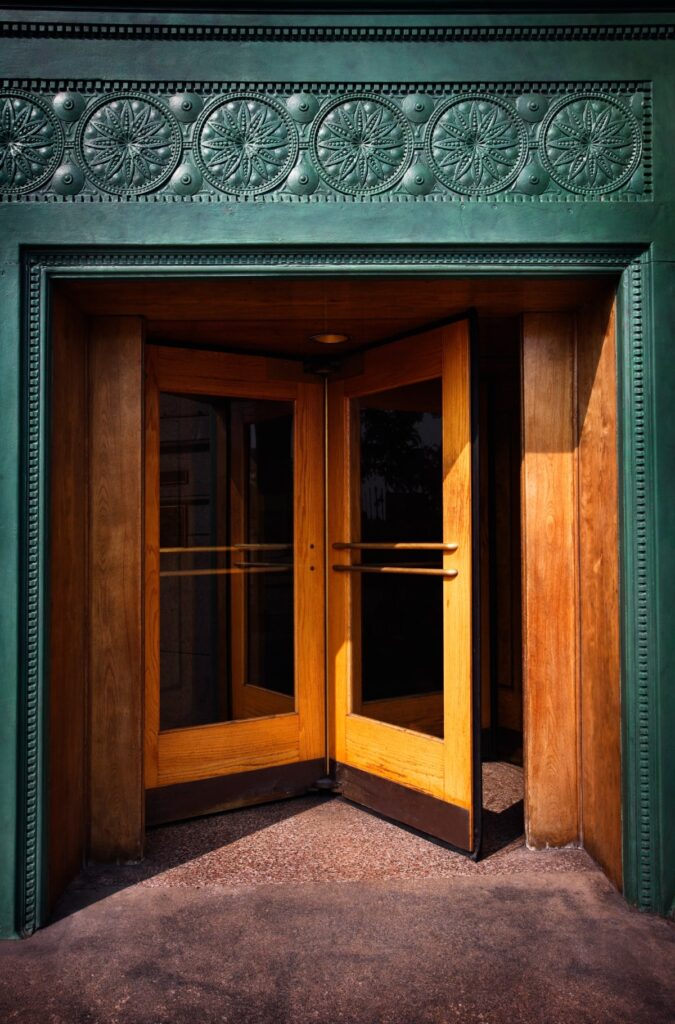
Theophilus Van Kannel invented the first rotating door in 1888 to stop slamming doors and prevent cold air from entering the building where he worked. Commercial buildings quickly adopted rotating doors, valuing them as an effective barrier against inclement weather and a more efficient way for people to move in and out.
Today, modern revolving doors are an essential part of many public spaces.
Not only do they help to manage traffic flow, but they also improve building energy efficiency.
Ultimately Van Kannel hoped the invention would benefit both commercial and residential buildings.
How do revolving doors work?
In commercial buildings, revolving doors play a key role in traffic flow, safety, and security.
Unlike swing doors, which open outward or inward, they consist of three or four sets of doors or leaves, which rotate around a central axis.
When someone enters the door, they cause it to rotate, carrying the person through it and into the building. Which in turn allows the next person to enter.
As the doors rotate, this action creates a seal that stops air from escaping, preventing drafts and keeping the building at a comfortable temperature.
Revolving doors prevent drafts and maintain consistent air pressure inside the building, saving energy costs associated with heating and air conditioning.
Revolving door installation and construction
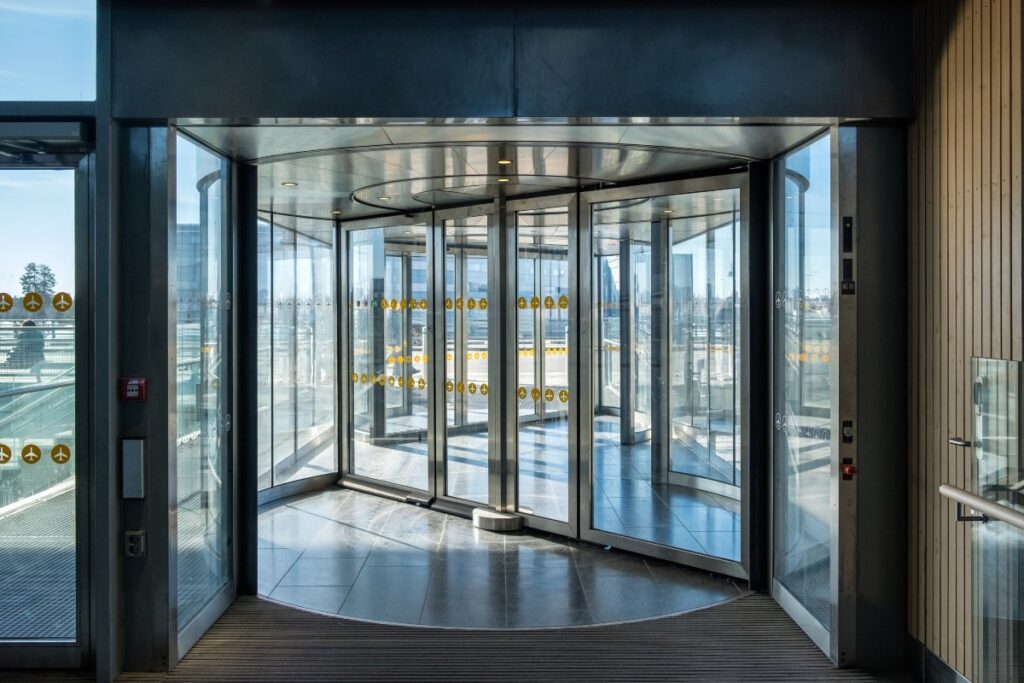
A revolving door consists of three or four door panels (or leaves) centred on a central pivoting shaft. These doors hang within a cylindrical enclosure, with openings inside and outside to allow passage as the door rotates. A mechanical braking device typically controls the rotation speed, while an electric motor powers the door.
Revolving doors also have several safety features for both users and buildings.
- A mechanical braking system that prevents the door from rotating too quickly and injuring someone.
- sensors that trigger the door to open when someone approaches.
sensors that prevent the doors from closing if someone is in the way. - an emergency exit button that can be used to bypass the revolving door if necessary.
The design and purpose of revolving doors help manage traffic flow and reduce air drafts and cold air from entering the building. Used with traditional hinged doors, revolving doors can help keep a building energy efficient.
Types of revolving doors
There are generally three types of revolving doors: manual, semi-automatic, and fully automatic.
- Manual revolving doors have the slowest rotation speed and require users to push the door to enter or exit the building.
- Semi-automatic doors have a faster rotation speed and sensors that will stop them from closing if someone is in the way.
- Fully automatic revolving doors are the fastest. They have an electric motor that helps to keep the door panels moving. They are usually equipped with sensors, so they open automatically when someone approaches.
Automatic doors make access easy for your customers and employees. Regardless of which type of door you choose, ensure it is the right size for your business and installed by a professional.
Applications of revolving doors
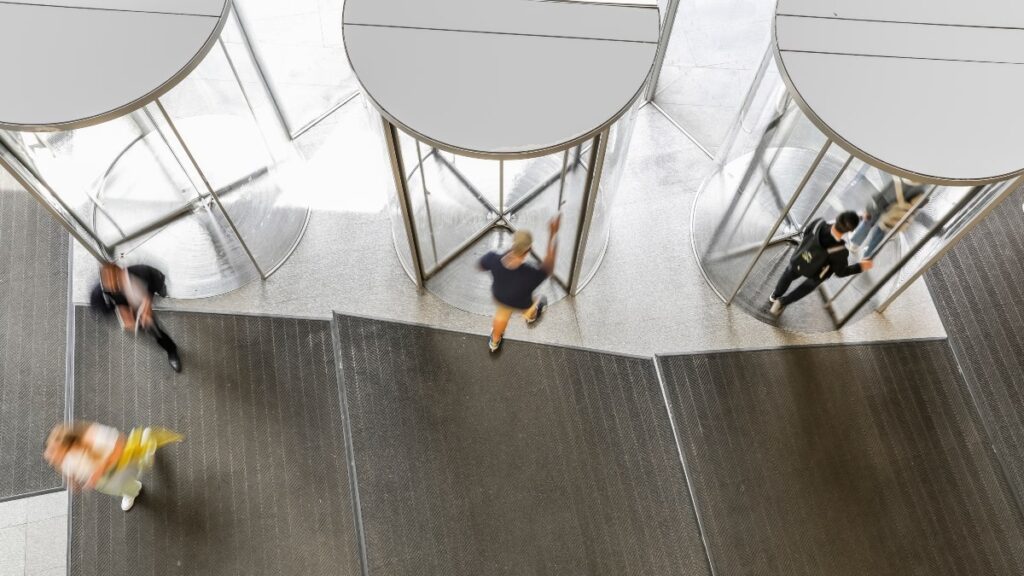
The architecture of skyscrapers and other high-rise buildings means they face different challenges to ensure the comfort of occupants. Revolving doors offer many benefits over hinged doors for commercial buildings. They cannot be slammed, reduce street noise, and provide access in high-density areas. Additionally, they enhance energy efficiency by preventing air from escaping through the door.
These advantages make revolving doors popular in hospitals, hotels, schools, and other public buildings. Buildings requiring elevated security also use revolving doors. In commercial applications, security revolving doors restrict entry and exit points and direct traffic through security checkpoints.
Designers can integrate additional security devices into revolving doors, such as metal detectors, sensor detection, panic locks, and access control systems. These features make revolving doors ideal for airports, banks, financial institutions, and government buildings.
What are the benefits of using a revolving door?
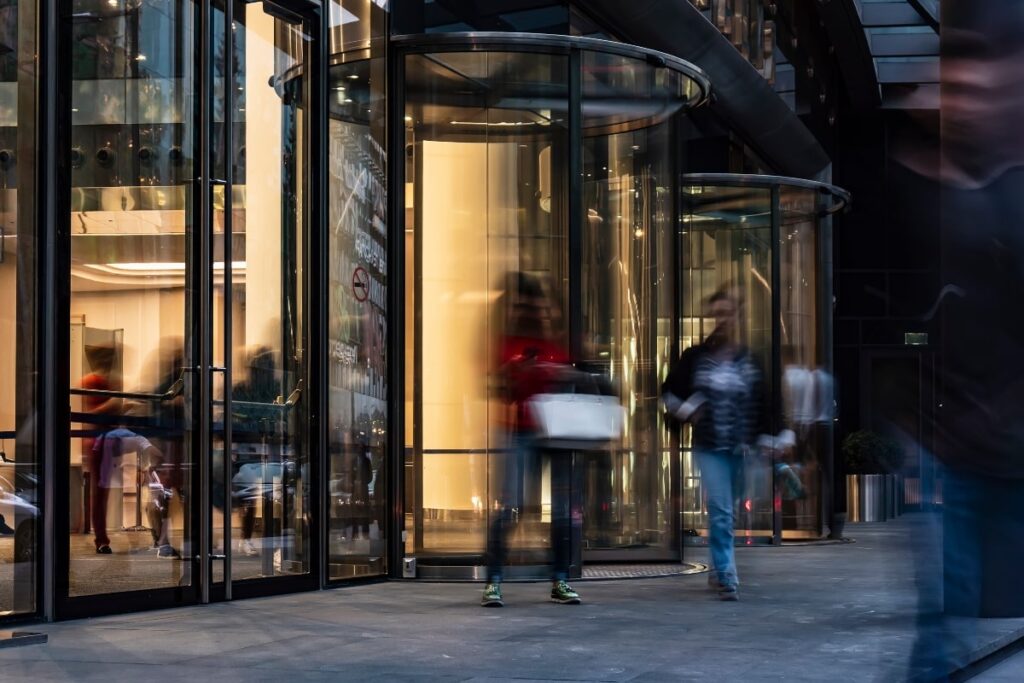
Beyond providing a means of entry to a building, revolving doors offer numerous functional and commercial advantages.
Blocks noise pollution
As the door rotates, it creates a seal that blocks street noise. Unlike swing or automatic sliding doors, the design is virtually noiseless.
Prevent doors slamming
This design allows the door to move slowly and remain unaffected by high winds or internal air pressure, reducing the risk of it slamming shut. As a result, revolving doors are safer for people passing through.
The flow of foot traffic
Revolving doors allow high foot traffic in and out of the building without compromising security.
High-density areas
Unlike regular doors, revolving doors permit free-flowing traffic, as more than one person can enter and exit simultaneously. They are perfect for high-footfall areas such as shopping centres.
Accessibility
These doors are larger than conventional doors, allowing for easy wheelchair access. As they don’t require the use of door knobs or handles to operate, they are also ideal for those with impaired dexterity.
Security features
Revolving doors are challenging to break into, and they can include security features like turnstiles and locks to control the flow of people in and out of the building. Some revolving doors have security features like metal detectors and other access control systems.
Emergency exits
Most revolving doors include a stop button that can open the door in emergencies or an evacuation.
Energy efficiency
As the door creates a seal, it also prevents heat from escaping the building, making it more energy efficient. While this may vary between buildings, climates, and countries, studies show that using revolving doors reduces energy consumption and heating and cooling costs, saving businesses money overall.
Logistics
With their overall height and large diameter, revolving doors can accommodate oversized objects, such as luggage and furniture. This makes them ideal entrances for hotels and office buildings, allowing people and oversize objects to enter and exit safely.
Hygienic
The seal created by a revolving door also helps to prevent draughts, dust and pests from entering the building. Today, many revolving doors are automatic, meaning they utilise hygienic and touch-free technology to help prevent the spread of germs and pathogens.
While the revolving door was invented over a century ago, it remains a popular choice for commercial buildings today thanks to its many benefits.
Disadvantages of revolving doors
While revolving doors offer several advantages, such as energy efficiency and security, they also have some potential disadvantages.
- They require more space than a standard door, so they may not be suitable for buildings with limited floor space.
- Although extremely safe, revolving doors can be dangerous if not correctly used, as they can trap fingers or clothing.
- Revolving doors are often much heavier than standard doors, making them difficult to open for those with limited mobility.
- They can pose a potential risk if they are the only exit point in an emergency evacuation. Therefore, adjacent outward swinging exit doors are required alongside revolving doors to ensure safe egress.
Emergency and fire safety plans must be at the forefront of any construction and building assessment plan. Before Installing doors in any building, you should understand the Australian standards and consult with a professional.
Despite these potential drawbacks, revolving doors’ advantages make them a safe and efficient choice for commercial buildings.
If you are considering installing a revolving door in your business, weigh the pros and cons carefully to ensure it is the right decision for your needs.
How to use a revolving door safely
Despite their visual appeal, revolving doors are not as widely used as you would expect. Many people don’t know how to use them correctly and often avoid them altogether.
If you are installing one at your business, consider what type of revolving door will work best. It’s also vital to communicate safe use of the door to visitors and staff.
It’s also important to understand accessibility at your business when installing a revolving door. Display clear signage, including Braille, to encourage safe passage and assist those with disabilities.
If you are unsure about how to use a revolving door safely, here are some tips:
- Enter the door one person at a time
- Do not run or push through the door
- Keep your hands and arms inside the door
- Use the handrail
- Do not try to force the door
- Keep clothing and bags clear of the gap between doors
- When exiting a revolving door, it is important to be aware of the direction of rotation and use caution to avoid injuring yourself or others.
You can safely use a revolving door without incident by following these tips.
Maintenance of revolving doors
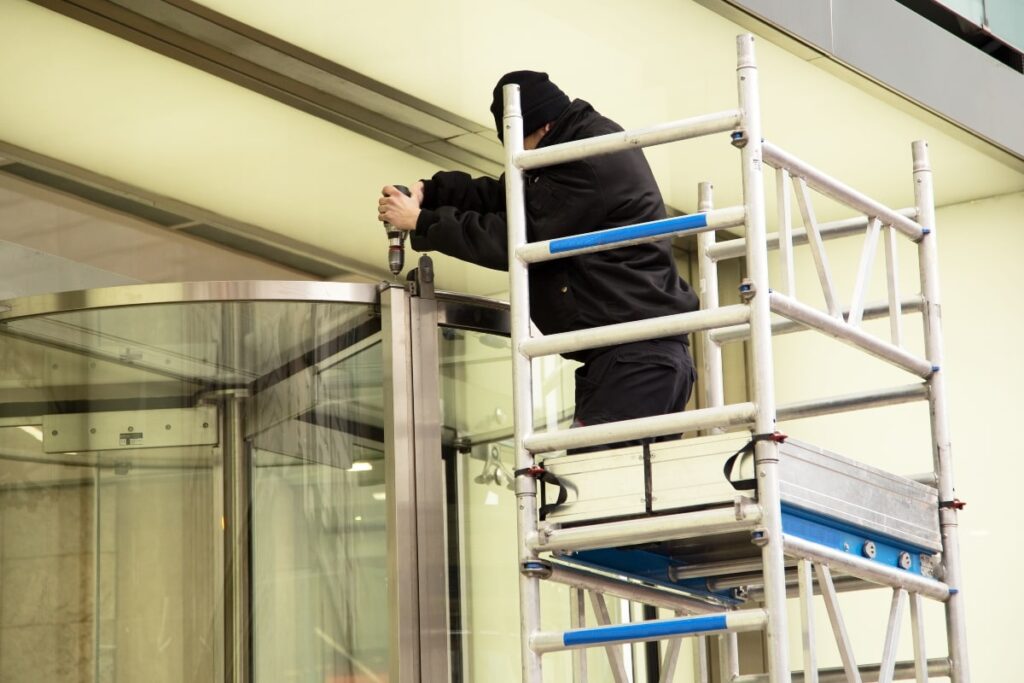
To keep your revolving door in good condition, it is important to perform regular maintenance.
- Ensure that an accredited supplier conducts installation.
- Ask questions about the suitability of the doors, as well as regular maintenance and repairs.
- Inspect the door monthly for any damage or wear and tear.
Clean the door regularly with a mild soap and water solution. - Lubricate the door hinges every six months to keep them operating smoothly.
By following these simple tips, you can maintain your revolving door and ensure it continues to operate safely and efficiently.
Experts in security revolving doors for your business
Revolving doors offer many benefits for commercial buildings, including energy efficiency, security, and disabled access.
Go Doors is Western Australia’s leading supplier of Record AGP Automatic Revolving Doors.
If you are considering installing a revolving door in your building, contact us to find out more about Record AGP security revolving doors and how they can benefit your business.
